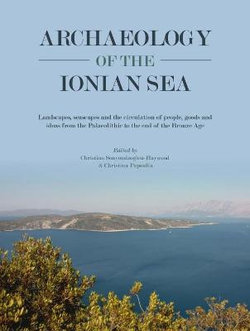The eastern Ionian occupies a geographically complex area, which since the Pleistocene has undergone significant alterations due to tectonic activity and sea-level fluctuations. This dynamic environment, where islands, mainland, and sea intertwined to present different landscapes and seascapes to the human communities exploring the region at different times in the past, provides an ideal setting for their study from a diachronic perspective.
This book deals thematically with the processes of circulation of people, materials, artefacts and ideas by examining patterns of settlement, burial and multi-layered interconnections between the different communities via land and sea. It investigates aspects of regional and interregional communication, isolation, collective memory and the creation of distinct identities within and between different cultural and social groups. It focuses on the islands of the Central Ionian Sea, offering new data from excavations and surveys on Zakynthos, Kefalonia, Ithaki and the smaller islands of the Inner Ionian Archipelago between Lefkada and Akarnania. The cultural interchange between the islands and the continental coasts is reflected in the volume with the addition of chapters dealing with contemporary sites in west Greece and southeast Italy.
The Ionian, often regarded as 'at the fringes' of the Aegean, the Balkan and the central Mediterranean archaeological discourse, has lately offered new and exciting data that not only enrich but also alter our perceptions of mobility, settlement and interaction. The collection of papers in this book enhances theoretical discussions by offering a geographically and culturally comparative approach, ranging from the earliest Palaeolithic evidence of human presence in the region to the end of the Bronze Age.




Share This Book: